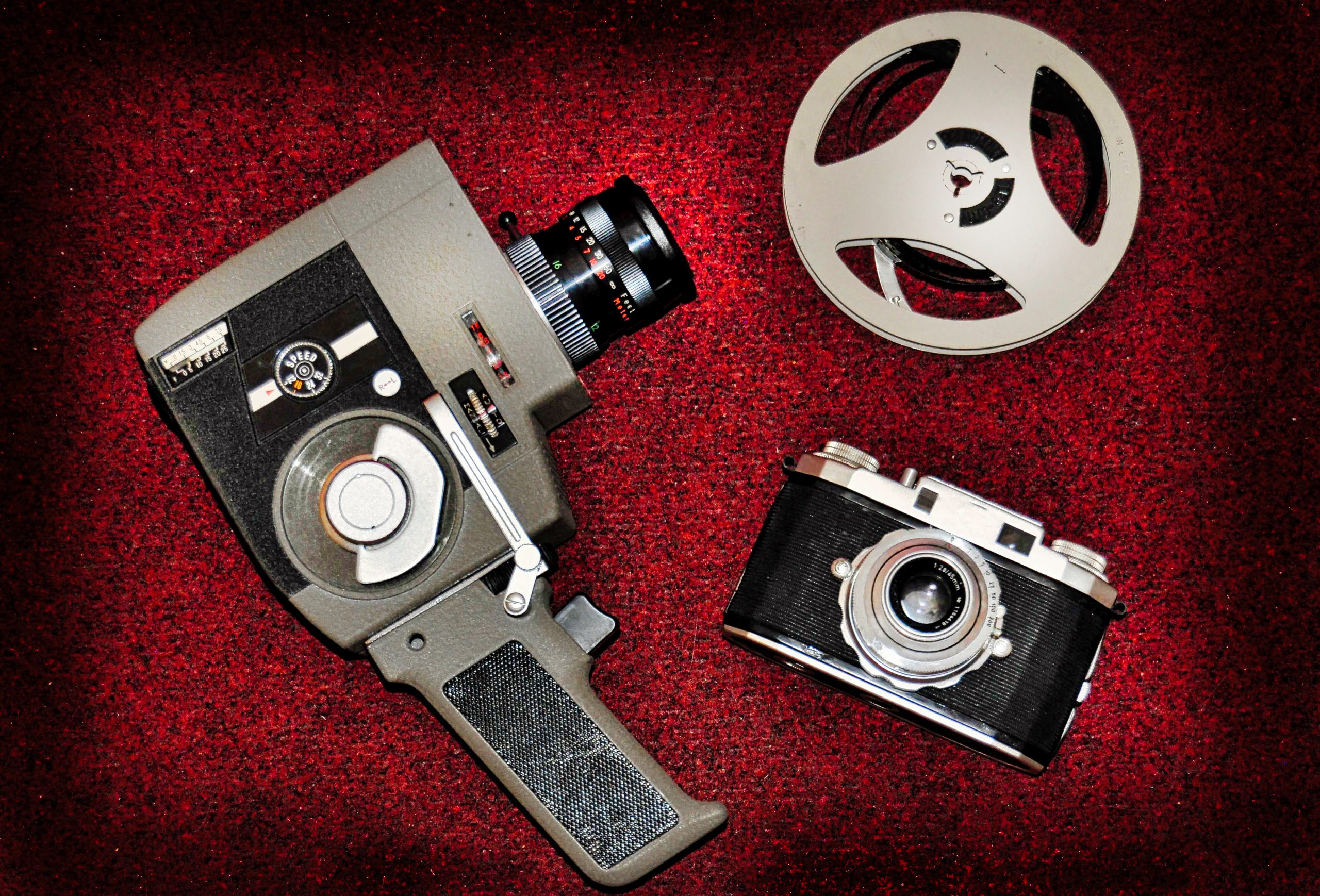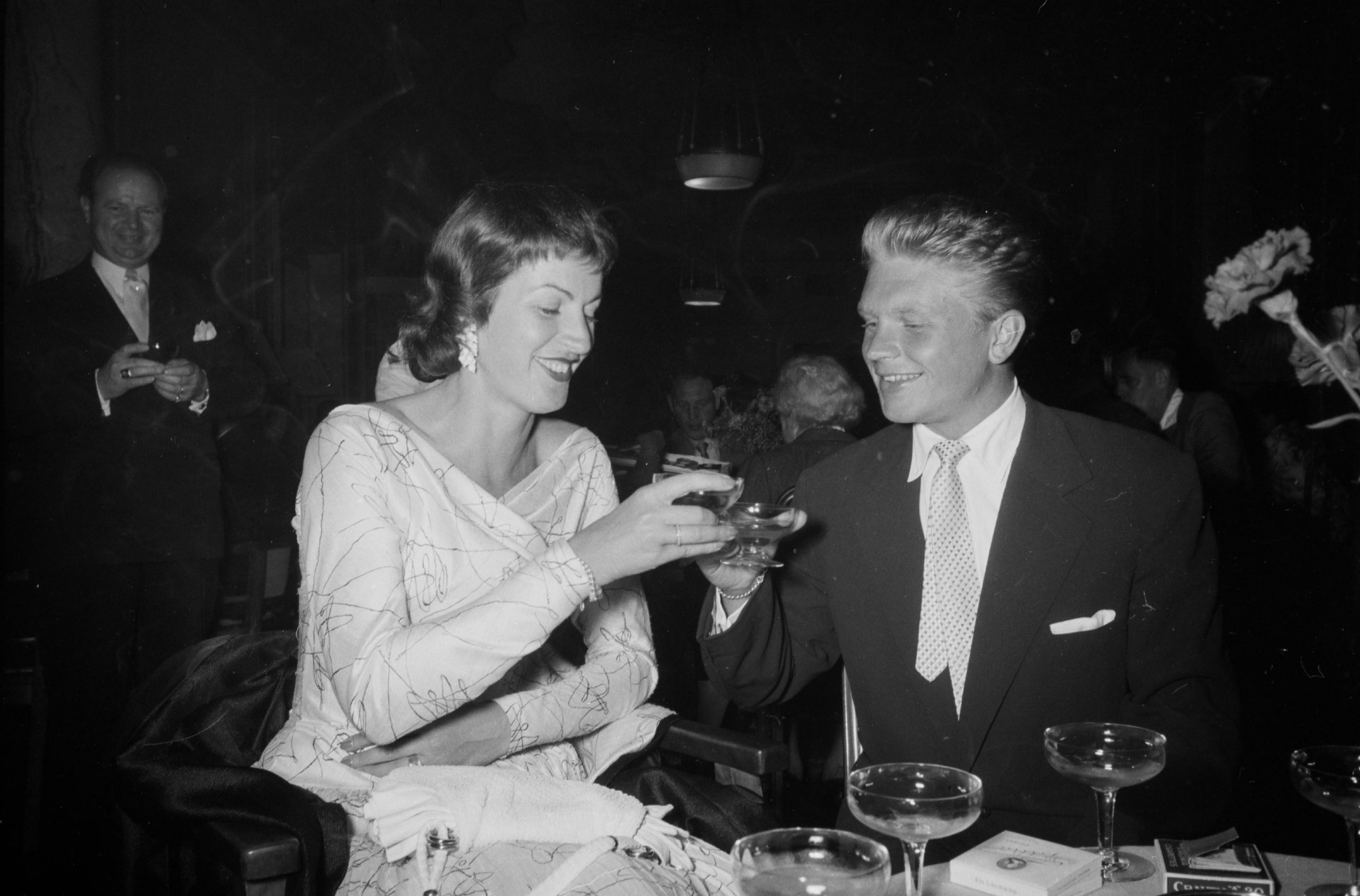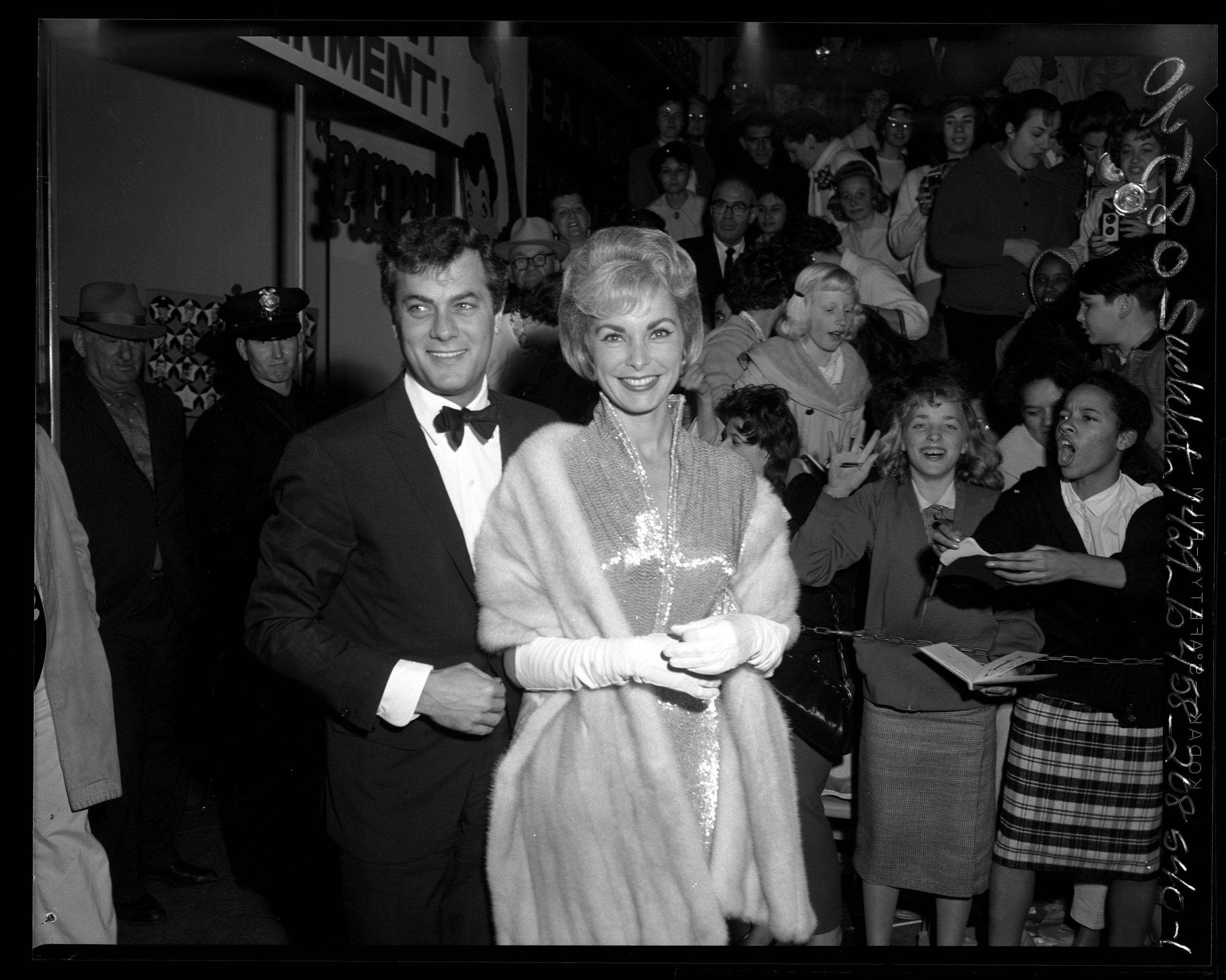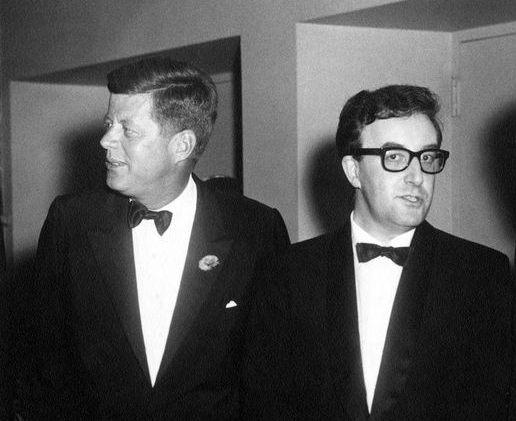Show business was in the family: Judy Garland’s parents were both vaudeville performers and ran a cinema in northern Minnesota: in 1922, when Frances Ethel Gumm was born, it was a bold venture to run a cinema in this region. Nevertheless, her parents’ cinema was a profitable enterprise: Soon, however, it became necessary for the family to leave Minnesota. Relocating to the vicinity of Los Angeles was an obvious choice as it became possible: At the time, there was hardly a better place than Los Angeles to run a cinema. The family moved to California in the middle of Hollywood’s golden age. The daughters of the family had meanwhile started their own vaudeville act under the name The Gumm Sisters.
Through her parents’ work, Judy Garland came into early contact with show business: it was soon clear to everyone that Judy Garland’s musical talent far exceeded that of anyone else in the family. In 1929, when Garland was around six years old, she appeared in a film for the first time together with her sisters in The Big Revue.
Judy Garland was barely ten years old and already totally immersed in the world of the entertainment industry.
A garland of flowers
The Gumm Sisters played this part four more times in the thirties. From 1933 Judy Garland lived in Los Angeles and attended the Lawlor School for Professional Children, then a popular address for child actors: Judy Garland was barely ten years old and already totally immersed in the world of the entertainment industry. Mother Ethel, meanwhile, took on the task of managing her daughters.
There is no consensus on how the name “Judy Garland” originated: one theory is that the name came about during a tour when the Gumm Sisters visited Chicago. In 1934, when Judy Garland visited Chicago, the city was a stronghold of cinema and theatre culture. The manager of the Oriental Theatre, George Jessel, commented that Judy was “pretty as a garland of flowers”: from then on, the Gumm Sisters performed under the name The Garland Sisters.
Later, Judy also used the name for her solo career. When the young actress said that she particularly liked the first name Judy, the name Judy Garland was born.
Contract with MGM
When the Garland Sisters returned from touring the United States, the musical group split up: because of Judy Garland’s immense talent, it was almost self-evident that she would pursue a solo career.
In September 1935, Judy Garland was given the opportunity to introduce herself to Ida Koverman, one of the assistants to Louis B. Mayer, who ran the MGM studios. Judy Garland had already tried several times before to get a job at different film studios but without success. However, when she presented herself at MGM in 1935 she was to be more successful – at the age of 13 Judy Garland got a contract with MGM Studios.
At first it was everything but easy for the responsible persons at MGM to find a role type for the young Judy Garland: Thus MGM let Garland act in some films together with the child star Mickey Rooney at first. Mickey Rooney and Judy Garland were the child star duo par excellence on the cinema screens in the thirties and forties.
One would not believe it: at the time, The Wizard of Oz was not a success at the box office.
The Wizard of Oz
As the production of The Wizard of Oz (1939) was being prepared, one thing was certain: it would be one of the most glamorous and lavish productions MGM had ever produced up to that point. Before Judy Garland took on the role of Dorothy in The Wizard of Oz, she had previously starred in several musicals: In a way, those musicals served as a preparation for her starring role, for which she is still known today. Without the role of Dorothy in The Wizard of Oz, there is no doubt that Judy Garland’s voice wouldn’t be remembered by as many people as it is today.
One would not believe it: at the time, The Wizard of Oz was not a success at the box office. This may have had something to do with the fact that several films were released in 1939 that are still celebrated by audiences and critics today – including Gone With The Wind. The competition that prevailed in American cinemas at the time was immense.
Over The Rainbow
The Wizard of Oz was in many ways an exceptional film for its time: not only was the plot of the film soaked up by children and adults alike, but it also cleverly worked with the possibilities of the emerging colour film. Thus, there is a stylistic break in the film between the black and white scenes in Judy’s home and the rich colour scenes in Oz – at that time, most films were either in colour or black and white. A film that combined both was very rare.
Moreover, for many moviegoers at the time, The Wizard of Oz was their first encounter with the new colour film. Judy Garland’s performance of Somewhere Over The Rainbow remains one of the most famous musical interludes in feature films to this day – the song Over The Rainbow is practically synonymous with Judy Garland.
From 1942 Judy Garland was given the chance to act in more adult roles: Her role in the Wizard of Oz had initially prevented Garland from being given any roles other than that of a girl or teenager for several years. Garland was too wrapped up in publicity tours across the United States to promote The Wizard of Oz.
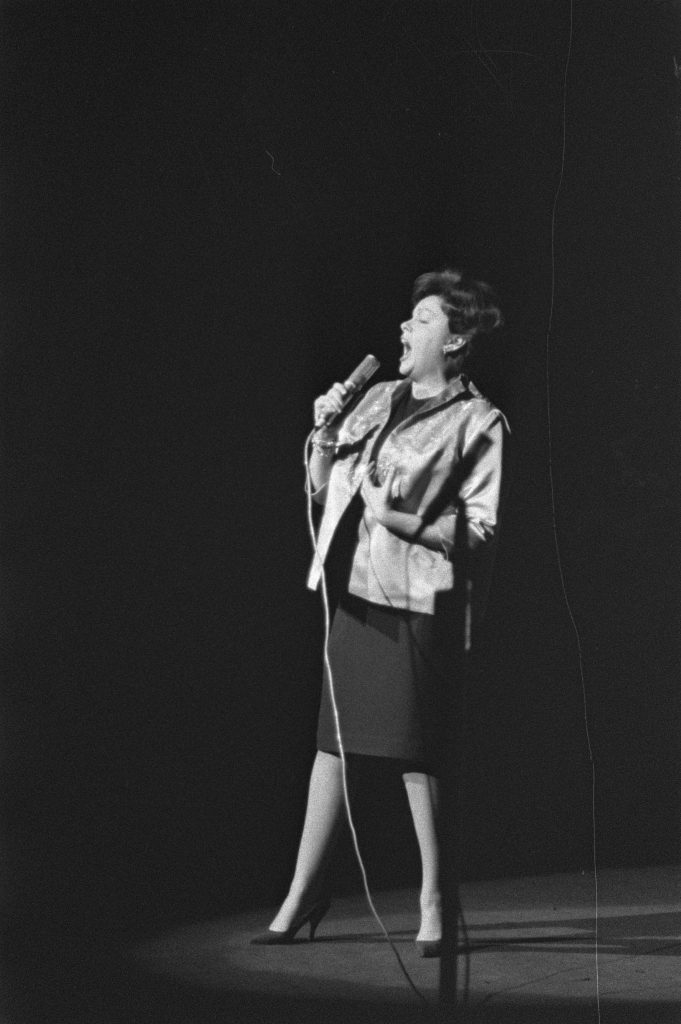
Picture credit: Fotograaf Pot, Harry / Anefo, Nationaal Archief, CC0
The end of an era
The Forties were to be a much more turbulent decade for Judy Garland – after several successful movies, the actress no longer wanted to submit to the strictly managed studio system. During the filming of the musical Annie Get Your Gun (1950), the situation reached a breaking point: Garland was originally supposed to play the lead role, she had already recorded the entire soundtrack and was present on the set for several months. It is said that Judy Garland went out to lunch on one of the shooting days and did not return to the set – MGM subsequently terminated the contract with Judy Garland.
For the actress, the end of the contract with MGM was the end of an era: although the mental and physical strain of studio work was by no means to be underestimated, the MGM contract gave Garland a certain amount of support and assured her that she could get roles. In show business one can hardly ever speak of professional security, but a contract with MGM was the closest thing to professional security for actors.
A Star is Born
For a short time Judy Garland returned to the stage after her MGM contract: An engagement at the Palace Theatre on Broadway, which began in October 1951, turned out to be a huge success for the actress. With this success Garland proved that she could still fascinate the audience and voices were raised whether Judy Garland would not be suitable for a Hollywood comeback.
The director George Cukor worked on the remake of the drama A Star is Born (1937) in 1954: Cukor could think of no one better suited for the role than Judy Garland – Garland’s star rose again in the 1954 remake of the 1937 classic. Although the film is now considered one of the star moments of Garland’s career, it was a flop at the box office at the time – this fact moved the actress to concentrate mainly on the concert stage for the rest of her career.
In 1961, Judy Garland played one of her most characteristically demanding roles in the courtroom drama Judgment at Nuremberg, which also starred Marlene Dietrich, as Irene Hoffmann.
The Hollywood studio system left its mark on Judy Garland’s life.
Between burdens and stardom
In the sixties, Judy Garland appeared several times on television and was on various concert tours – she had long since passed the zenith of her career. Her role in The Wizard of Oz is often regarded as the high point of her career – after this role, she never appeared in another film that was anywhere near as successful.
The Hollywood studio system left its mark on Judy Garland’s life: the enormous strains she was exposed to at a young age made themselves felt in the later course of her life. This is also the reason for her relatively early death at the age of 47. The legacy of screen legend Judy Garland is hardly comparable to the career of any other Hollywood star of her generation: when Garland was celebrating her greatest successes, other actresses of her generation had not even considered a film career. In the collective memory, Judy Garland is best remembered for her role of Dorothy in The Wizard of Oz: Somewhere Over The Rainbow is the anthem of the golden age of Hollywood.
Main source: Charles River Editors: American Legends – The Life of Judy Garland, published in 2013
Cover picture: Judy Garland 1960 upon her arrival at Amsterdam Schiphol airport
Picture credit: Fotograaf Lindeboom, Henk / Anefo, Nationaal Archief, CC0

 Deutsch
Deutsch